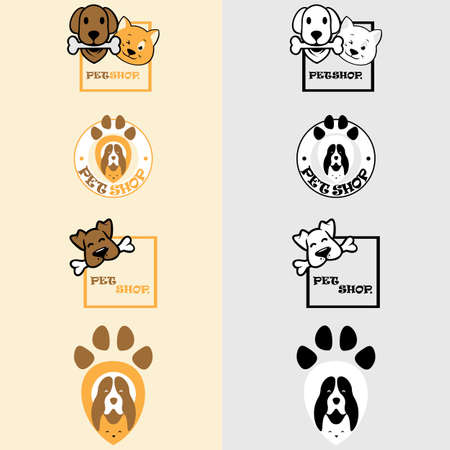Understanding Your Pet’s Chewing Habits
When it comes to choosing safe toys for pets that love to chew, understanding their unique chewing habits is the essential first step. Pets chew for many reasons, and these can range from natural instinct to boredom or even teething. For example, puppies and kittens often chew as part of their development and to soothe sore gums. In contrast, adult dogs and cats may chew out of stress relief, curiosity, or simply because it’s fun! Certain breeds, like Labradors or Jack Russells, are known to be more avid chewers due to their high energy levels and working backgrounds. Personality also plays a significant role—some pets are gentle nibblers while others are determined power chewers. By observing your pet’s age, breed tendencies, and individual behavior patterns, you’ll gain valuable insights into what types of toys will be both safe and satisfying for their specific chewing style.
2. Materials to Look for and Avoid
When choosing toys for pets that love to chew, the type of material is crucial for both safety and durability. Not all toys are created equal—some materials can stand up to aggressive chewing, while others may break apart or pose health risks. Understanding which materials are safest and which should be avoided will help keep your pet happy and healthy.
Safe and Durable Materials
| Material | Benefits | Notes |
|---|---|---|
| Natural Rubber | Highly durable, flexible, non-toxic | Great for strong chewers; easy to clean |
| Nylon | Tough, long-lasting, comes in various textures | Good for heavy chewers; monitor for sharp edges as toy wears down |
| Rope (100% cotton) | Gentle on gums, helps clean teeth | Ensure tightly woven; replace if fraying occurs |
| Food-Grade Silicone | Soft yet strong, safe if ingested in small amounts | Best for moderate chewers; check for wear regularly |
Materials to Avoid
- Plastic: Cheap plastics can splinter or crack, causing choking hazards or internal injuries.
- PVC or Vinyl: These may contain harmful chemicals like phthalates or BPA that could leach out when chewed.
- Squeaker Inserts: Many dogs try to dig out squeakers, risking ingestion and blockage.
- Rawhide: Though popular, rawhide can swell in the digestive tract and cause blockages. It’s also often treated with chemicals.
- Bones (Cooked or Brittle): Cooked bones can splinter easily, leading to mouth injuries or intestinal damage.
Quick Reference: Safe vs. Unsafe Materials for Chew Toys
| Safe Materials | Avoid These Materials |
|---|---|
| Natural Rubber Nylon Cotton Rope Food-Grade Silicone |
PVC/Vinyl Cheap Plastics Squeakers Rawhide Brittle Bones |
Your pet’s individual needs matter too—always supervise playtime and replace toys at the first sign of excessive wear or damage.
Selecting the right chew toy material not only ensures your pets enjoyment but also prioritizes their safety and well-being. By sticking with proven, non-toxic materials and steering clear of potentially hazardous options, you’re setting your furry friend up for hours of safe play.

3. Size and Shape Matter
When selecting chew toys for your pet, the size and shape are just as important as the material. Choosing a toy that’s too small can pose a serious choking risk, especially for dogs and cats who love to chew aggressively. A good rule of thumb is to pick a toy that is larger than your pet’s mouth so they can’t accidentally swallow it. On the other hand, a toy that’s too large may be difficult or unappealing for your pet to play with.
Consider your pet’s jaw strength when evaluating shapes and sizes. Strong chewers, such as certain breeds of dogs, may need thicker and more robust toys that won’t break apart easily. For pets with smaller mouths or less powerful jaws, opt for toys designed specifically for their size group. Many American pet brands offer sizing guides on packaging—be sure to check these recommendations before buying.
Toys should have smooth edges and no small parts that could break off and become lodged in your pet’s throat. Avoid toys with long strings or ribbons if your pet is a determined chewer, as these can also be swallowed and cause harm. Always supervise your pet during playtime with new toys to ensure they are safe and enjoying their new treat without any risk.
4. Check for Certifications and Brand Reputation
When choosing toys for pets that love to chew, it’s essential to prioritize safety by considering both brand reputation and product certifications. Reputable brands usually invest in quality materials and thorough testing, which can help prevent accidents and health risks for your furry friend. Look for toys made by well-known American companies, as these often adhere to stricter safety standards. Additionally, check for certifications such as ASTM (American Society for Testing and Materials) and CPSIA (Consumer Product Safety Improvement Act), which indicate that the toy has undergone rigorous safety evaluations.
| Certification/Standard | What It Means | Why It Matters |
|---|---|---|
| ASTM | Ensures materials and design meet U.S. safety standards | Reduces risk of toxic chemicals or choking hazards |
| CPSIA | Requires testing for lead, phthalates, and mechanical safety | Protects pets from harmful substances commonly found in plastics and dyes |
| American-Made Label | Toy is manufactured in the USA | Often subject to more stringent oversight and quality control |
Before purchasing, take a moment to research customer reviews and check if the manufacturer has had any recalls or safety issues in the past. Trusted brands are transparent about their testing processes and ingredient sourcing. When in doubt, contact the company directly or consult your veterinarian for advice on safe toy options tailored to your pet’s chewing habits.
5. Regularly Inspect and Replace Toys
Keeping your pet safe doesn’t end with choosing the right toy—it’s just as important to maintain those toys over time. Chew-loving pets, whether dogs or cats, can quickly wear down even the toughest toys. That’s why it’s essential to make a habit of regularly inspecting all chew toys for signs of damage such as cracks, missing pieces, or sharp edges.
Broken or worn-out toys can pose serious risks, including choking hazards, intestinal blockages, and mouth injuries. Always discard any toy that shows significant wear and tear or has become too small for your pet to safely play with. If you notice loose threads on rope toys, rubber splitting, or stuffing coming out of plush toys, it’s time for a replacement. Remember: no toy is indestructible, especially in the jaws of an enthusiastic chewer!
Incorporate a quick inspection into your routine—perhaps during daily playtime or weekly cleaning. This proactive approach helps prevent accidents and ensures your furry friend always has access to safe, engaging toys. By staying vigilant, you protect both your pet’s health and your peace of mind.
6. Consult Your Veterinarian
When it comes to choosing safe toys for pets who love to chew, your veterinarian is one of your best resources. Every pet has unique chewing habits and health considerations that can affect which toys are safest and most suitable. Scheduling a quick chat or check-up with your vet can provide invaluable insights tailored to your specific pet. Your veterinarian can help you understand what materials and toy types are appropriate for your pet’s size, breed, age, and dental health. They may also warn you about popular toys that could pose choking hazards or lead to broken teeth, especially if your furry friend is an aggressive chewer. Don’t hesitate to bring up any concerns or questions about toy durability, toxicity, or how to monitor your pet’s playtime safety. By discussing your pet’s chewing needs and toy selections with your veterinarian, you’ll get professional advice that supports both fun and well-being. This collaborative approach helps ensure that the toys you choose will contribute positively to your pet’s physical and mental health—making playtime safer and more enjoyable for everyone.


